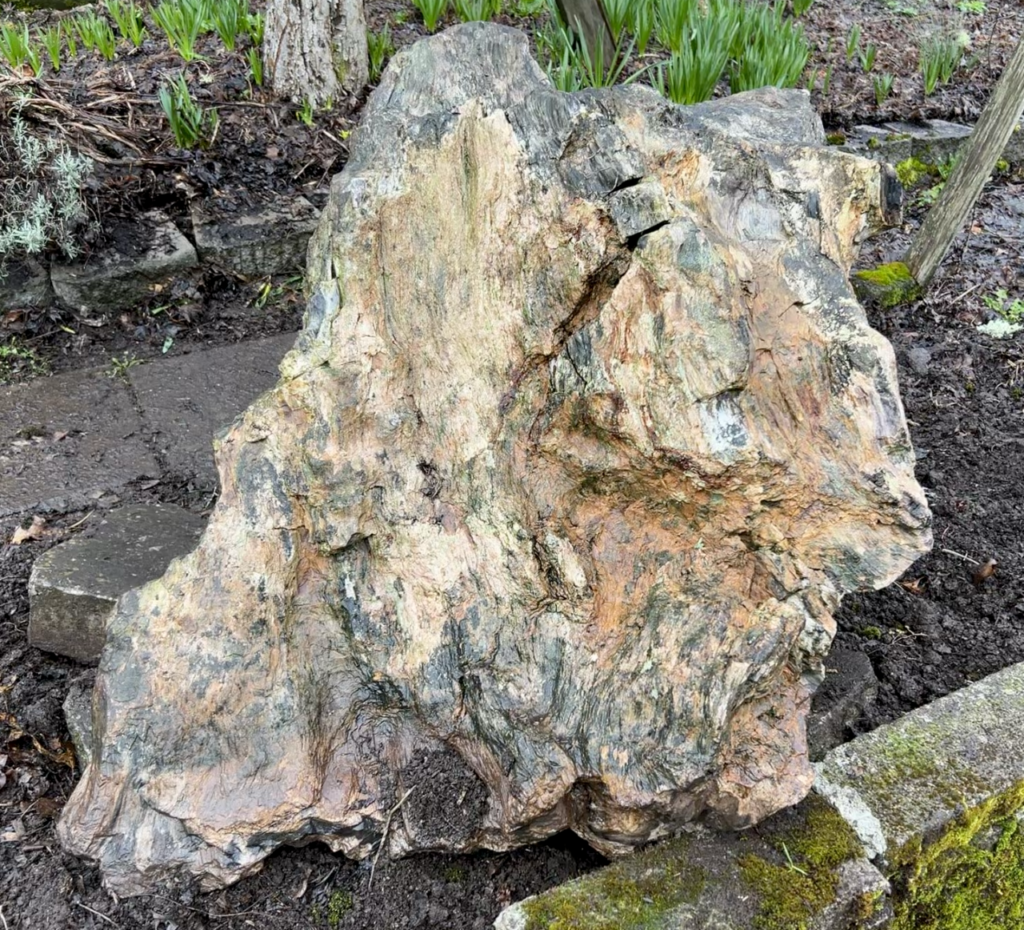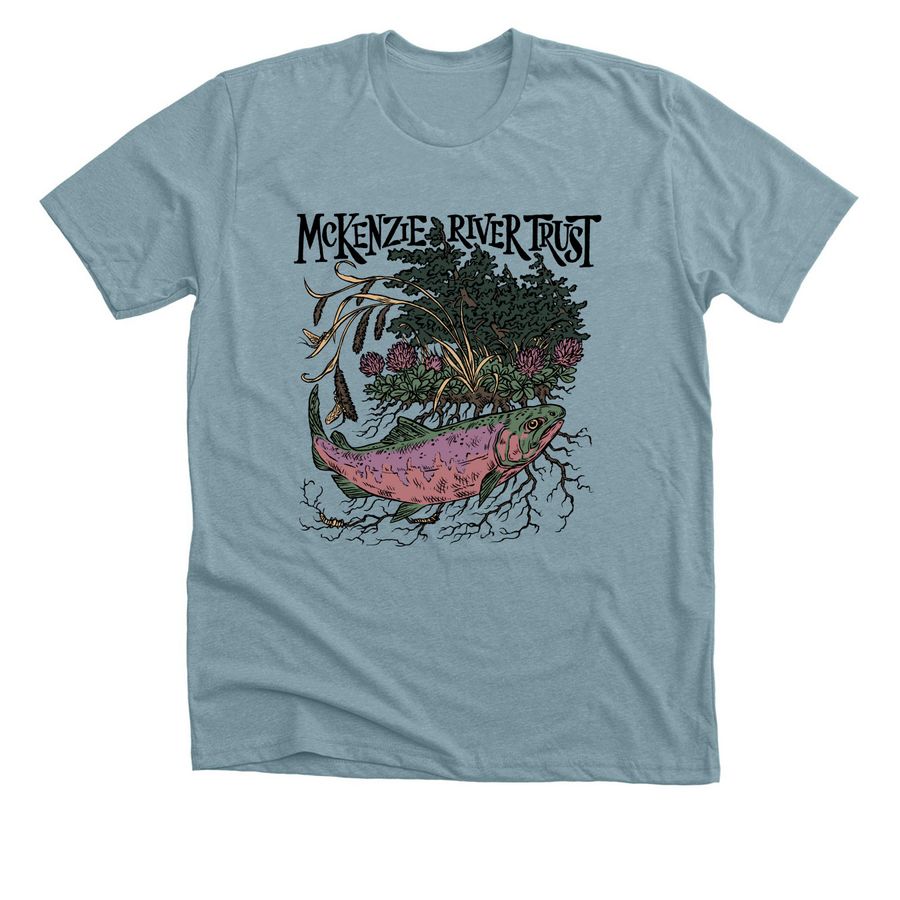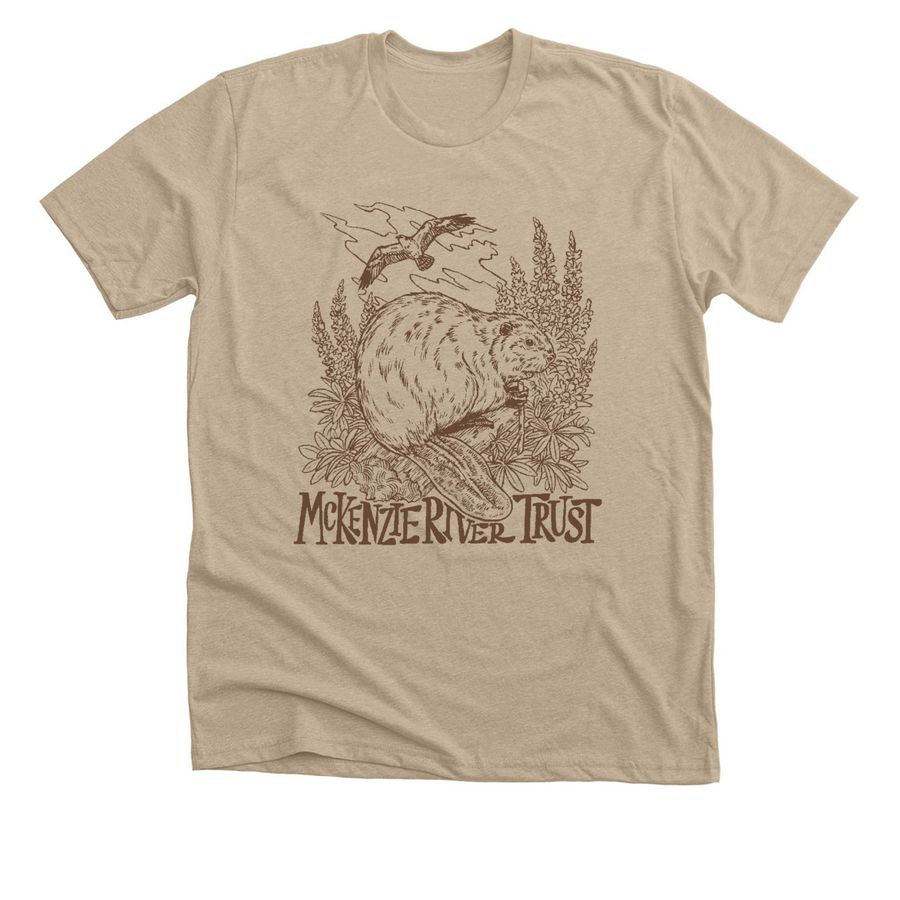Tom Titus

After an arduous afternoon toting heavy objects out of my childhood home, I was relaxing alone on the back patio, legs outstretched, listening to Pacific treefrogs singing from the farm pond just beyond the backyard fence. Nightfall gentled into the McKenzie River Valley like an old memory. A platinum moon rose full above the garage on my left, casting long shadows into the yard. The back pasture paled in the moon-glow and stretched toward a ghostly barn, finally giving way to a hillside steep and dark with Douglas-fir. We were selling this property that Mom and Dad bought in 1960 and where they spent most of their adult lives. My son and his family had been living here but have now moved into a home of their own. My body rested while my mind struggled to absorb the imminent loss of my formative place.
Sometimes letting go requires digging deeper. Sitting alone on a full moon night, things no longer seen became visible. Between the garage and my chair on the patio was a dark muddy space that until recently had been occupied by a fossil stump roughly the size of a steamer trunk. The nextdoor neighbor kid and I used to rockhound along an eroded skid road that switchbacked up the hill. The track was poorly constructed and in a constant state of erosion during the rainy season, a process that sometimes revealed small geological treasures. Occasionally we’d happen onto a piece of petrified wood, pry it out of the brick red mud, turning it in our young hands. Our laconic identification was simply petrified rather than petrified wood. This truncation saved an unnecessary syllable.
The ditchless road occasionally spawned mudslides. When my buddy and I were maybe ten years old, we found ourselves at the foot of a slide that reached into the second-growth firs along the back edge of the pasture. A rock about the size of a loaf of bread was visible above the surface. My friend brushed his hand across the exposed stone and in near-disbelief exclaimed petrified! We dug around it with our hands, but the wood-gone-to-rock kept going deeper. Picks and shovels were requisitioned from the house. We ended up spending most of that summer digging the fossil out of the ground. When it was finally free, Dad brought his blue 1952 Ford pickup through the pasture and backed it up to the stump. We managed to drag and roll the behemoth onto a pair of 2 x 12s chained to the back bumper and skid it to the house. For nearly six decades the gargantuan stone rested in state next to the patio, adorned by Mom’s various landscaping plants and a creeping scourge of English ivy.
The topography of this rock that long ago had been a tree is complex. At the top the colors are dominated by a storm of darkening grays. From here the grain weaves gracefully toward the base in a range of browns: khaki, cocoa, chestnut, burnt umber. At one point the descent is interrupted by a six-inch cinnamon gash that might have been a region of decay. Toward the bottom, the stone flares into the uppermost beginnings of roots or perhaps buttresses. My favorite part of this ancient stump is the center of the top surface where an oblong hole about two inches by three inches bulges with several crystal knots, their grains the size of course table salt.
Lately, I’ve been wondering how deep into time those tree roots once reached. Petrification is more nuanced than a pair of rockhounding kids could have imagined. For starters, turning wood to stone requires immediate burial to exclude the oxygen necessary for organisms that cause decay. After burial, mineral-rich water invades the spaces within the plant cells, and a process called permineralization begins. The dissolved minerals, often silica, precipitate inside the cells. This means that those knots of crystal bulging at the top of the stump are probably silica, which makes them quartz.
This rock that was once a stump that was once a tree was once a part of an ancient forest. Toward the foot of the hill where we found the fossil, the rocks are contemporaneous with the Wallace Creek Formation on the south side of this ridge whose components date from the upper Oligocene (about 25 million years before present). The Wallace Creek Formation includes evidence of lahars (volcanic mudflows) and deposits from hillside outwashes. The Willamette Valley of that time was a stormy coastline transitioning into a brackish embayment. Tree diversity was high. The giant fossil had been a large tree, and candidate species are numerous; maples, oaks, hickories, Metasequoia, cedars, and redwoods were all there.
That forest of eons ago worked its way into my imagination. I wondered how Oligocene sunlight scattered through the canopy leaves and how onshore winds bent limbs into song. Salamanders similar to our coastal giant salamander might have lumbered over the forest floor. Would my nostrils have tingled with the same odor of decaying needles and leaves as they do in our current forests? I am left to wonder how that forest died. Because the stump is large and petrification requires quick burial, death was likely sudden, perhaps the result of a volcanic mudflow. The stump stands in testimony to the cataclysmic forces of Cascadia that have punctuated vast reaches of geological time. We were powerless then by our absence. We are powerless now in our smallness.
In my smallness I sat looking out at that hillside now placid in the moonlight. Mom and Dad are gone, and no one in the family wants to keep the place. Although I was trying to shed feelings of ownership, letting go of that petrified testament to recent and ancient history was hard. One of my three brothers rousted me out of indecision, insisting that I transport the fossil to my house in Eugene. He and I dug 6 inches of mud from around the base and rolled the rock onto a pallet. A cable winch was anchored to the hitch of Dad’s big pickup, and we slid the monstrosity to the edge of the driveway. There it lay, tipped on its side, truncated roots facing out as if sulking and daring us to take it further from its home.
My good fortune in life includes a large and loving extended family, some of whom have access to appropriate equipment. The fond memories that cement us also make it easier to ask for favors. I called my cousin who owns a pickup with a hydraulic lift gate. When we were kids, he and his sisters often stayed with us for extended visits, so he knew of the stump. My cuz and I easily rolled the rock onto the lift gate. When we slid it into the pickup bed for the short trip to Eugene, I swear I heard it grumble. Unloading it wasn’t as straightforward. We leveled the lift gate with the front garden bed where the stump would lie in state, winched it awkwardly out of the truck, and placed it roots-down with the photogenic side facing the sidewalk. But it wasn’t quite right. My cousin offered to call in a favor from a friend with a small backhoe. About then my neighbor across the street joined in the fun. We grunted, sweated, and cussed that half-ton of wood-gone-to-stone more or less into place. My middle finger was crushed between the fossil and the cement garden wall, and I swore hard while the purpling fingernail became an extended obscenity. There may be a backhoe in my future.
Back on the moonlit patio, my ears embraced a lone Pacific treefrog letting out an exploratory creeeaak from the farm pond, as if to ask is anyone still here? Melancholy mixed with gratitude drifted in on the cooling night air. I’m aspiring to fossilization—not in the pejorative sense of a stony and inflexible old timer but in the way that a place settles into our bones. Heck, I’m already permineralized. Minerals have seeped into my cells from decades of drinking the water from the well and eating food from Mom’s garden. I’ve literally been transformed into an animate monument to this little farm on an erosional terrace above the McKenzie River backed by a hillside that sometimes breaks loose to reveal stone relics of an Oligocene woodland. Maybe someday someone can scatter part of me here with Mom and Dad. Maybe a handful of my minerals will be hanging around in 25 million years. Maybe they’ll find their way into a fossil.






